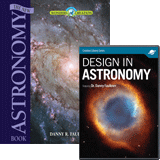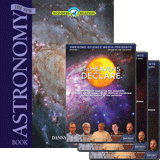
Is the Universe Expanding and What Is It Expanding Into?
Why astronomers believe in an expanding universe, how the universe isn’t “expanding into” anything, and the reasons biblical creationists should be careful when arguing against the big bang
Excerpted from the article “Common Big Bang Cosmology Misconceptions.”
Is the Universe Expanding?
There is some misunderstanding about the expansion of the universe, the foundation of modern cosmology. Did Edwin Hubble discover that the universe is expanding? Not exactly. What Hubble found in 1929 was that there is a linear relationship between the redshifts and distances of galaxies. What is redshift? The spectra of galaxies contain absorption lines from their constituent stars. These absorption lines are due to elements in the atmospheres of the stars absorbing energy at specific wavelengths. If the distance of a galaxy is increasing (such as when moving away from us), then the wavelengths of those spectral lines will be shifted to longer wavelengths than they are measured to be in a stationary laboratory. Since longer wavelengths are toward the red end of the visual spectrum, we say that the spectral lines are redshifted. Conversely, if a galaxy’s distance is decreasing (such as moving toward us), then the spectral lines are blueshifted. Hubble measured the distances of a few galaxies, along with their redshifts, to show the linear relationship. Hubble’s work was crude by today’s standards, but in the century since, his relationship has been greatly improved upon. What does this linear relationship mean? The most straightforward interpretation is that it indicates the universe is expanding; that is, galaxies are getting farther apart. Keep in mind that this is an interpretation of the data. There could be other interpretations, but until any other good interpretation comes along, this interpretation remains the best. For purposes of discussion, I will assume that this is the correct interpretation. If galaxy redshifts obey the Hubble relation, then redshifts reflect distances of those galaxies, and we say the galaxy redshifts are cosmological.
The most straightforward interpretation is that it indicates the universe is expanding; that is, galaxies are getting farther apart.
It is worth pointing out that many textbooks imply that Hubble stumbled upon his discovery, but this isn’t the case. Hubble knew exactly what he was looking for because he was aware of one of the implications of Einstein’s theory of general relativity when applied to the universe. A few years after Einstein published his theory, the Russian mathematician Alexander Friedmann showed that in the general case, the universe must either be expanding or contracting. Hubble also was aware of the work of American astronomer Vesto Slipher about 15 years earlier, who showed that most galaxies had redshift. Hubble was not the only person who put these two clues together and realized what could be shown astronomically, but Hubble perhaps was the only person who realized this who also had access to the telescopes capable of doing this work.
Are Redshifts Due to Velocity?
In general relativity, the proper understanding is that it is space that is expanding. As space expands, it carries galaxies along with it. Galaxies move with respect to space, but even if they weren’t moving, they still would recede from us as space expands.
A common misconception (not just among biblical creationists) is that universal expansion is due to velocity. That is, many people think that redshifts of galaxies are due to galaxies moving away from us. Thus, the redshifts of galaxies are compared to the Doppler effect, where the wavelength of any wave phenomenon (such as sound) that is emitted by an object moving away from the observer is shifted to longer wavelengths. However, in general relativity, the proper understanding is that it is space that is expanding. As space expands, it carries galaxies along with it. Galaxies move with respect to space, but even if they weren’t moving, they still would recede from us as space expands. This distinction between cosmic expansion and the Doppler effect may sound like a very fine point, but it is important. For instance, cosmic inflation is the idea that shortly after the big bang, the universe underwent a very rapid but short-lived burst of hyper expansion. Cosmic inflation supposedly was faster than light. If redshifts were due to velocity, then this would require that matter moved faster than light during cosmic inflation, which would have violated special relativity. However, space may expand faster than light and carry matter with it without violating special relativity.
What Is the Universe Expanding Into?
In short, the universe isn’t expanding into anything. It is just getting larger.
This misconception stems from the assumption that there must be something outside of the universe to expand into. Given that the universe normally is defined as the totality of physical existence, then there cannot be anything physical outside of the universe.
In short, the universe isn’t expanding into anything. It is just getting larger. This misconception stems from the assumption that there must be something outside of the universe to expand into. Given that the universe normally is defined as the totality of physical existence, then there cannot be anything physical outside of the universe. If there is anything outside of the universe (such as some higher dimensionality), then it is entirely unknown to us and likely will remain so. Hence, there is nothing to expand into.
The common analogy of an expanding balloon illustrating the expansion of the universe probably helps fuel this misconception. The balloon obviously is expanding into the surrounding space, so it is easy to see why many people might think there must be something outside of the universe for the universe to expand into. Most analogies break down at some point. The problem with this analogy is that it is the surface of the balloon that represents the universe. But the surface of a balloon is two-dimensional, and it expands into three-dimensional space that surrounds it. For that matter, the surface of the balloon contains a volume interior to its surface that is expanding along with the balloon. But space is three-dimensional. As far as we know, there is no four-dimensional volume contained by the universe or a four-dimensional space into which the universe is expanding. But if there were, we could not see it, detect, or even fathom it.
Likewise, the misconception that we are at the center of the universe arises from the misunderstanding of cosmic expansion being due to velocity. This leads to the mistaken belief that we must not be moving, and hence everything else in the universe must be racing away from us, placing us at the universe’s center. However, if it is the space of the universe that is expanding, then at every location in the universe, everything else would appear to be moving away. Consider this analogy to raisin bread dough as it proofs, or rises. The raisins represent individual galaxies, and the rising dough represents the expanding universe. The raisins do not increase in size, so they do not share in the rising of the dough. But the raisins are carried along by the rising dough so that to each raisin, it would appear as if all the other raisins were moving away from it. In similar fashion, the galaxies don’t share in universal expansion, but they are carried along by the expansion of the universe. Therefore, an observer in any galaxy would see all the other galaxies moving away from himself.
Conclusion
I have discussed some common misconceptions about modern cosmology and universal expansion. Some of these misconceptions are common among laypeople in general, but some are specific to biblical creationists. In their zeal to argue against the big bang model, some creationists may have strayed into some of these misconceptions. However, it is important that we ensure that our arguments are sound and spoken with grace (Proverbs 15:28, 18:13, Colossians 4:5–6, 1 Peter 3:15).
The author wishes to thank Troy Lacey for editing and formatting this article.
Recommended Resources

Answers in Genesis is an apologetics ministry, dedicated to helping Christians defend their faith and proclaim the good news of Jesus Christ.
- Customer Service 800.778.3390
- © 2024 Answers in Genesis





